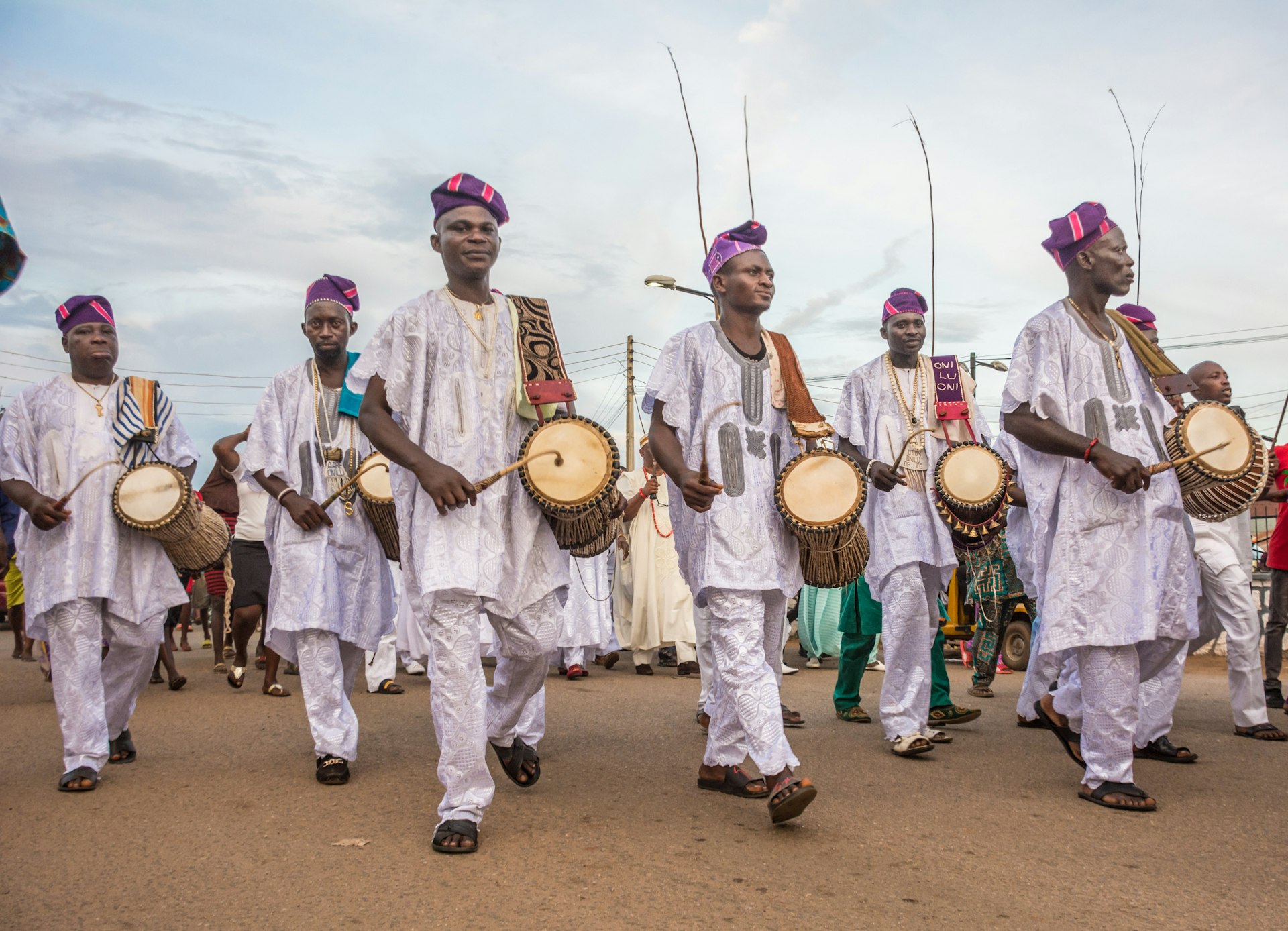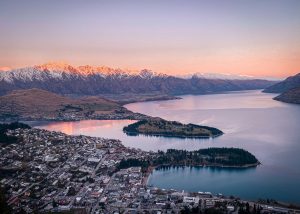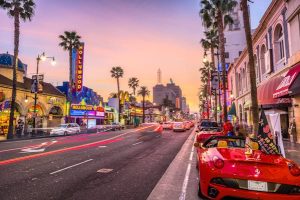
You probably already know that Nigeria is a country of diverse ethnic groups, numbering at least 250, and there is no better way to experience a fraction of that multiplicity than through a road trip.
With the government’s recent investments in road infrastructure, the highways are a lot smoother to travel on compared with a decade ago. You could begin your journey from the southern half of the country (say Lagos, the former federal capital) and head up north. Or take off from the northern end, perhaps from the historic city of Kano, and make your way southwards.
Whatever you decide, expect surprises. With every state border or region you cross, you’ll see lush forested areas replaced by rugged outcrops and savannah vegetation giving way to creeks, mangroves and wetlands. In both the north and south, markets abound, enlivened by warm and friendly people. In the dry season, you’ll likely see locals fetching firewood for household use, or tilling the soil for the approaching planting season.
Along the way, you’ll also notice changes in the architecture, clothing and the weather. And if your road trip takes you through the riverine areas of the Niger Delta, there is every chance that you’ll spot differences in the fishing huts as well as in the fishing boats and gear.
If you’re a visitor to Nigeria or haven’t lived in the country for any length of time, you probably won’t understand its peculiar road etiquette. In this case, it’s best to leave the driving to an experienced local. Besides, being a passenger really gives you a chance to properly savor the sights. Here are some of Nigeria’s most rewarding driving routes.
Discover the world’s most intriguing experiences with our weekly newsletter delivered straight to your inbox.  Ofada rice and stew is the signature dish of Abeokuta © Alucardion / Shutterstock
Ofada rice and stew is the signature dish of Abeokuta © Alucardion / Shutterstock
1. Olumo Rock, Abeokuta
Best road trip for culture vultures
Lagos–Abeokuta; 101km (63 miles)
If you’re in Lagos for most of your stay, make the drive out to one of the historic towns in Yorubaland – Abeokuta. Founded in the 1830s as a wartime hideout, its rocky vistas contrast sharply with the flatland that is Lagos.
Drive to the Alake’s palace, where the newly built Egba Museum curates the reign of its past kings and their colorful wardrobes. Don’t leave without hiking Olumo Rock, where the earliest settlers lived nearly a century ago. Afterward, settle down at a canteen within the complex for a plate of jollof rice or Ofada rice and stew, one of the town’s signature dishes. On your way there, or on the way out, stop at the Adire International Market (aka Adire Mall) and marvel at the town’s centuries-old indigenous fabric heritage.
Planning tip: This is best as a day trip from Lagos, but either way, make sure you arrive early enough for the climb up Olumo (two hours). Allow for six hours at the destination.
2. Ikot Abasi
Best road trip for colonial history
Uyo–Ikot Abasi; 76km (47 miles)
The drive to Ikot Abasi from Uyo is as refreshing as the time spent in the town itself. On arrival, you’ll be met by unspoiled forest vegetation and quiet streets pockmarked by colonial architecture, some still in excellent condition. The serene Imo river casts its own spell on the surroundings.
Here you will find a slave bunker (built in 1795) and a warehouse linked to a disused tramline. You can walk a few steps on the concrete Bridge of No Return and then climb down into the dark chambers of the bunker, which was designed to hold 30 enslaved people but was usually packed with way more. At the warehouse, guides will explain what life was like for enslaved people before they were sent off to the coast for their horrifying journey across the Atlantic.
On your way back to Uyo, stop at Abak, once a key palm oil factory in the colonial years. Though production has thinned out, observing the locals at work is an education in itself. If you’re not keen on that, head to the Tilapia Resort, also at Abak, where you should buy yourself some palm wine and catfish pepper soup.
Detour: Turn off the Abak Road towards Ikot Ekpene (22km/14 miles), renowned for its cute raffia-palm crafts and souvenirs. Shops are full to overflowing with raffia bags, purses, wallets, footwear and more.
3. Wase Rock
Best road trip for rock climbers
Jos–Wase; 211km (131 miles)
For most of the journey, the road from Jos to Wase town is a mix of houses scattered at the bases of giant outcrops, grassy fields and cacti fencing. Depending on the season, you’ll notice vast farmlands (groundnut, millet, guinea corn, cabbage, corn) on both sides of the road, with some ridges noticeable even on rock faces.
The outline of the Wase inselberg (968ft) is noticeable from Yola Waka, some 20km (12 miles) away. If you arrive early enough, you’ll find monkeys prancing about and, in the blazing afternoon heat, join the locals and take shade under the trees. The Plateau State Tourism Corporation (Yakubu Gowon Road) will provide useful advice and help arrange logistics for climbers. This site is also a bird sanctuary so be sure to take your binoculars along.
Local tip: You’ll come across a variety of local delicacies on your way. Buy some suya at Mangu, one of the best places on the Jos Plateau for the delicacy, or yar’ya (deep-fried millet and beans).
 Time your visit to Ile Ife for the Olojo Festival in October © Ajibola Fasola / Shutterstock
Time your visit to Ile Ife for the Olojo Festival in October © Ajibola Fasola / Shutterstock
4. World Ifa Temple, Ile Ife
Best road trip for African traditional religion
Ibadan–Ife; 76km (47 miles)
Ile Ife, the ancestral home of Yoruba-speaking people worldwide, is a maze of shrines and temples. It’s a straight road from the university town of Ibadan. While there’s not much to see on the highway – except prayer cities and camps – Ife itself is a bundle of cultural and archaeological assets.
With a history dating back to the 12th century, Ife takes pride in its 201 deities and honors them with festivities and rituals. Custodians, who are mostly senior chiefs, warmly welcome visitors to the various sites, including the Ifa and Oduduwa temples, and Oranmiyan shrines. The World Ifa Festival is held in the first week of June and pulls Ifa priests and practitioners from around the world. Celebrations peak in late October when His Imperial Majesty, the Ooni of Ife, presides over the mammoth gathering that is the Olojo festival, with the Ooni’s palace at the center of the celebrations.
Detour: Whether on your way to Ife or on the return leg, turn off the highway at Gbogan junction. The road leads to the Osun-Osogbo Grove, a Unesco World Heritage Site where thousands of devotees visit every August to celebrate Osun, the fertility goddess.
5. Confluence Town, Lokoja
Best road trip for scenery and history
Abuja–Lokoja; 199km (124 miles)
Abuja, Nigeria’s federal capital, is a road trip away (3–5 hours) from some of the most important visitor attractions in Nigeria, from the ancient emirates in the country’s northern region to the landscapes and lifestyles of the Middle-Belt towns and cities.
A two-hour drive southwards takes you to Lokoja, where the Rivers Niger and Benue – two of West Africa’s best known rivers – meet. The fishing communities of Ohono and Gbebe have lived here for ages; at dawn, they can be seen roasting their catch from the previous day. Plan to spend the night here. In addition to some of its historical landmarks, your trip here is incomplete until you hike the Patti Hills (1500ft), with a towering silhouette that is noticeable from the lowland areas. The view from its top is worth the climb – time it just right to catch a blissful sunset.
If you’re interested in the making of pre- and post-independent Nigeria, breeze through the photographic exhibition of the National Museum of Colonial History (Lugard Road), house in a pre-fabricated wooden building, itself a remnant of the colonial times. You may wish to stop over at the World War Cenotaph (Murtala Mohammed Way), inscribed with the names of fallen British and African soldiers. When you are done sightseeing, treat yourself with a meal of grilled fish, deep-fried potatoes and drinks at any of the open-air bars in the city.
Detour: On the Lokoja–Okene stretch, pause to observe how skilled carvers fashion mortars and pestles from tree trunks.
6. Ore Highway
Best road trip for nature, wildlife and ancient crafts
Ore–Benin; 94km (58 miles)
Ore is a busy gateway town, connecting travelers from Nigeria’s western region to the Niger Delta and Easter Regions. There are many restaurants here, so you’ll have no trouble finding where to eat or pick up refreshments for the journey ahead.
A drive on the recently paved Ore Highway is as smooth as any journey in Nigeria can get. And for most of it, you’re flanked on both sides by a long and imposing stretch of lowland forests, and hectares of oil-palm and rubber plantations. Stop at the Okomu National Park (Okada junction – 45km west of Benin city) where there are well-marked nature trails and plenty of opportunities for birdwatching – where better to do this than from a treehouse 140ft above ground?
Head on to Benin City, the heart of the ancient Benin kingdom, where bronzes were skillfully crafted by a guild of artisans for the king’s courtyard. As you drive towards the city center, you’ll catch glimpses of the 700-year-old palace walls, a mass of solid clay. Head to Igun Street, where the knowledge of bronze casting has been passed down for generations and where the bronzes are produced even now. It’s a short walk to the national museum from here. On your way, take some time to sightsee around Ring Road, the most artistically decorated city center in Nigeria: the public sculptures collectively represent Bini royalty, folklore and heritage.
The Benin bronzes have put Nigeria in the global spotlight in the past year or two. Looted by British colonial officers in 1897, there have been repeated calls for their return.
Planning tip: Permission to tour the palace must be secured in advance, from the Benin Traditional Council (its office is within the palace premises). To get a feel for Benin’s rich culture, plan your visit for late December, when the Igue festival, a royal spectacle, is celebrated.



